Kategori: In English
-
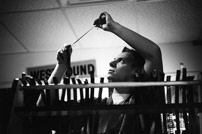
Cutting and Film
FEATURE. A recent investigation into film editing by James Cutting, Jordan DeLong, and Christine Nothelfer of Cornell University has created a lot of publicity – not least because the research indicates that films have become increasingly more adroit at grabbing the viewer’s attention. The debate has stimulated the following article by Barry Salt that discusses shot length patterns and the work of Cutting et al.
-
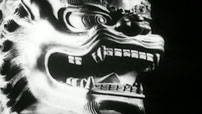
The Nursemaid’s Buckle
FEATURE. Mark Le Fanu reflects on the significance of objects, props and magical images in classic movies.
-
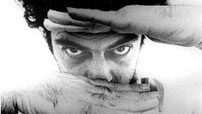
The Art of Hunger: Re-defining Third Cinema
FEATURE. Like the different films that it comprises, Third Cinema is a relatively unknown concept – and often a misconceived one. From the radical films of Glauber Rocha, through the works of Senegalese director Ousmane Sembène, and the collective productions of Black Audio Film Collective, Third Cinema denotes an often radical type of cinema. Outspokenly independent and overtly regional, movies within Third Cinema may have only this in common: they emphasize the importance of de-marginalization and of strong national identities in an ever-changing global context. Nicola Marzano analyses this concept of Third Cinema, maintaining its relevance in today’s global film environment.
-

Love and Adversity: Borzage and Silent Melodrama
FEATURE. Frank Borzage is one of the great masters of melodrama. Mark Le Fanu discusses Borzage’s late silent films within the genre in the wake of a sumptuous DVD compilation that gives us an excellent chance to view or re-view no less than eleven of his films.
-

The Handheld Digital Camera Aesthetics of The Blair Witch Project and Cloverfield (via Strange Days)
FEATURE. Sometimes heralded as a source of liberation, other times chided as the cause of nausea-invoking images. There are both friends and foes of the handheld digital camera. However, few would dispute that it has developed into a remarkably complex aesthetic practice. Jenna Ng discusses the implications of its aesthetics – focusing on The Blair Witch Project (1999) and Cloverfield (2008).
-
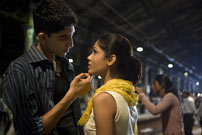
The ironies of Bollywood
FEATURE. Tabish Khair adresses the term ‘Bollywood’ in this issue of 16:9 and finds that the term does not cover all the films coming out of Bombay, let alone Calcutta and the thriving centres of film-making in South India. ‘Bollywood’ describes primarily ‘commercial’ films made in Bombay – films featuring song, dance, action, drama, and often borrowing features and ideas from Hollywood.
-

Camera Movement Revisited
FEATURE. Two critical perspectives have had a particularly strong influence on the way in which visual style has been addressed in this and the previous 29 issues of 16:9: British mise-en-scène criticism and cinematic poetics. Jakob Isak Nielsen discusses the merits of these two perspectives by assessing how they produce knowledge about a specific stylistic device: camera movement.
-
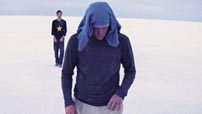
Towards an Aesthetic of Slow in Contemporary Cinema
FEATURE. Whereas a quickening of pace is a major characteristic of the history of mass-market cinema, a slowing down of pace in niché-market cinema has developed alongside it – not merely as an oppositional practice but also as an aesthetic strategy in its own right. Discussing the work of filmmakers such as Tsai Ming-liang, Gus Van Sant and Albert Serra, Matthew Flanagan argues that one can detect a unique formal and structural design: an aesthetic of slow.
-

Neurosis Hotel
FEATURE. The cinema of Abel Ferrara is wild and unruly yet remarkably sharp and intelligent. It is a cinema that seeks the truth of the moment and a cinema whose moments reverberate into the realms of philosophy, allegory and religion. Adrian Martin takes us on a tour de force through Abel Ferrara’s career and describes the merits of his cinema with illuminating precision.
-
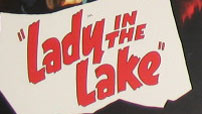
The Real Thing is Something Else
FEATURE. The trailer to Lady in the Lake (1947) promises an experience of the real which it will provide by having the camera assume Philip Marlowe’s first person perspective throughout. Critics have discounted the experiment for a variety of reasons. Adopting a phenomenological perspective and comparing the film to RoboCop (1987), Henrik Smed Nielsen suggests an original reason why its first person perspective “just does not feel right.”
-

The Big Swede: The Tribulations of a Dane in 1920s Hollywood
FEATURE. Laura Petersen Balogh is in the process of undertaking a pioneering work on Danish silent film star, Karl Dane (1886-1934). Dane rose to fame towards the end of the silent era only to be marginalised with the coming of sound. He ended up operating a hot dog stand outside of the studio where he had once been a star and ultimately committed suicide in 1934. Balagh traces his career and performative characteristics.
-

Gremlins in the Mix
FEATURE. Gremlins (Joe Dante, 1984) is an important film for a number of reasons. It was one of the highest-grossing films of 1984 and it influenced the politics of movie rating in America. But beyond this, Gremlins also demonstrates the power and the capacities of genre mixing.
